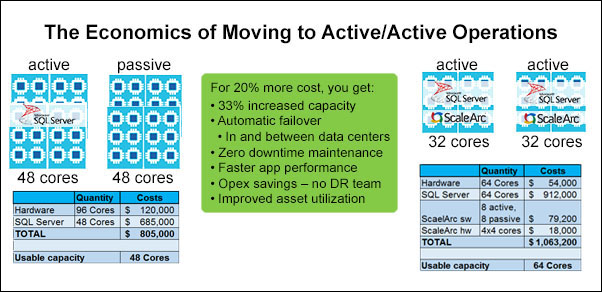The Hidden Cost of “Dark” DR
 For decades, Disaster Recovery (DR) has dominated the landscape as the best architecture for business continuity. The problem is, DR expects you to have a disaster, and then to recover from that disaster. Because that capacity sits idle until disaster strikes, many customers call that “Dark DR.”
For decades, Disaster Recovery (DR) has dominated the landscape as the best architecture for business continuity. The problem is, DR expects you to have a disaster, and then to recover from that disaster. Because that capacity sits idle until disaster strikes, many customers call that “Dark DR.”
In today’s digital business world, of course, disasters aren’t tolerated well. A majority of organizations cite considerable loss to revenue and/or reputation if their online offerings go down. Rather than build DR structures, organizations today need to design for Continuous Availability. Continuous availability, in turn, requires active/active architectures.
Active/active designs present their own challenges – they cost more, and they’re complicated to build. Turns out, though, that new technologies and new designs are reducing the technical complications, and the economics of active/active don’t match the mythology.
Business executives have long been frustrated by the cost of idle hardware – a depreciating asset on the books, these leaders have been looking for a way to gain value from these “offline” assets. At the same time, many IT folks have held misconceptions about the cost of moving to active/active architectures, overestimating the price tag.
When you move to an active/active architecture, you do pay more. You now need to pay for software on active resources rather than have “free” software on idle hardware. But the notion that moving to active/active architectures doubles your costs is wrong. It overlooks the fact that you can use less hardware, which helps offset the higher software costs.
Let’s look at the math:
DR Scenario:
- 48 active cores of database capacity
- 96 cores of hardware (half active, half idle)
- 48 cores of database license (only purchased for active cores)
- total operating capacity: 48 cores
Active/active scenario
- 64 active cores of database capacity (32 in each site)
- 64 cores of hardware (all active)
- 64 cores of database license (now needed in both locations)
- total operating capacity: 64 cores

When you factor in list pricing for servers, database licenses, and – in the active/active scenario – the hardware and software costs for database load balancing software to enable active/active operations at the database tier, the costs tally to:
- DR = $805,000
- active/active = $1,063,200
Yes – active/active costs more than DR, but only by about 20%. That’s nowhere near the “active/active will double my costs” myth a lot of folks have in mind. This 20% increase in net cost delivers tremendous benefits that, from an overall cost to the business, outweigh the capital costs. For 20% more spend, you get:
- 33% increased capacity
- Failover within and between data centers
- Zero downtime maintenance
- Faster app performance
- Opex savings – no DR team
- Improved asset utilization
Check out our resources for all the details on how you can overcome the technical challenges of implementing an active/active architecture and reap the benefits of the Continuous Availability model it enables:
White paper
PowerPoint Presentation
Follow Michelle McLean on Twitter or connect with her on LinkedIn.
comments powered by Disqus
